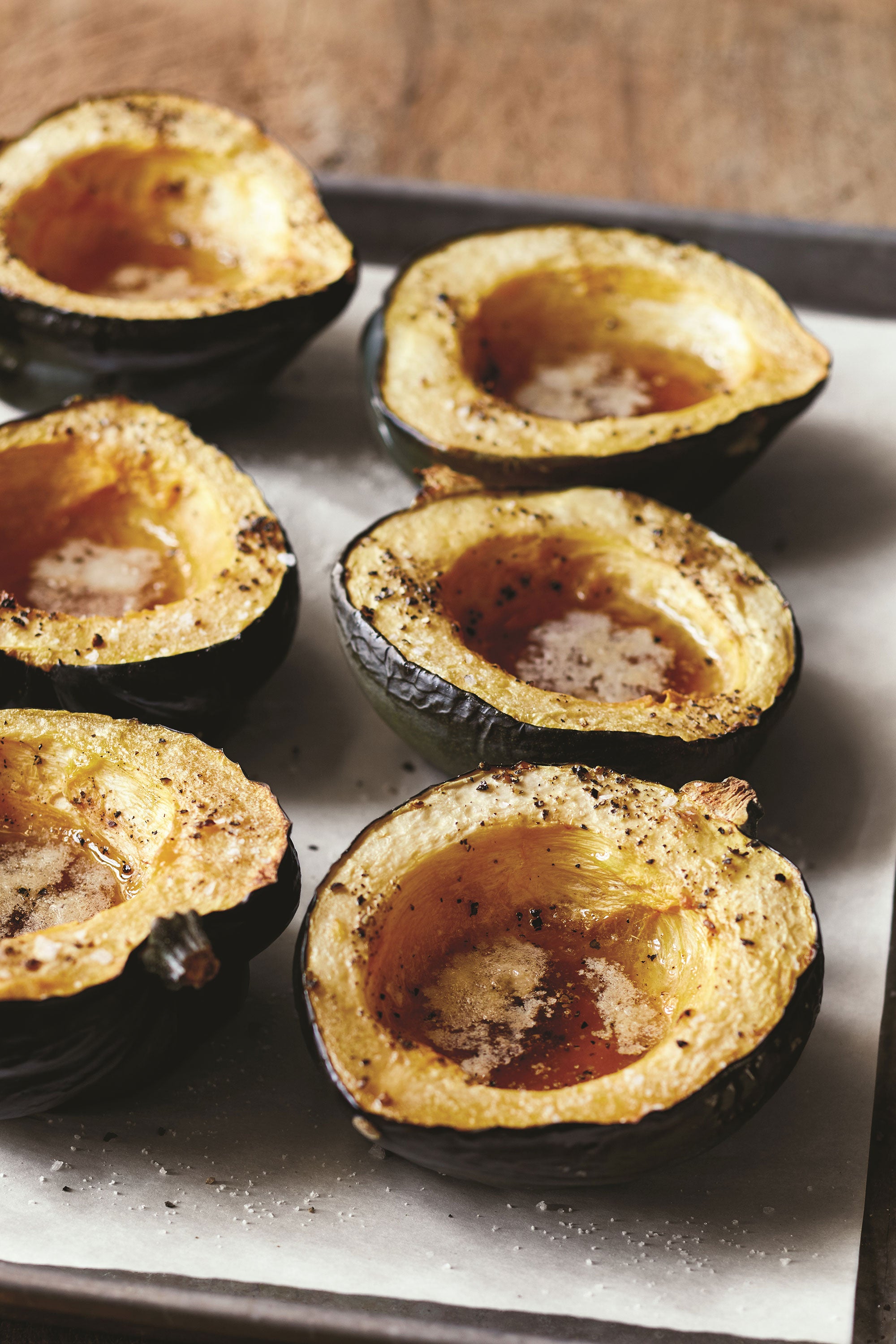

If you are following a special diet for medical reasons, be sure to consult with your primary care provider or a registered dietitian to better understand your personal nutrition needs. In a large mixing bowl, combine mustard and syrup. Toss squash to coat and arrange in even layer. I would recommend sweet potatoes or Brussels sprouts as a great substitution that will not affect cooking time and will be delicious with the chicken glaze. You can also swap out any of the vegetables. Then slice it in half down the middle, vertically. Stand the squash up and slice off the top and bottom. Pile squash on a rimmed, nonstick baking sheet and drizzle with about 2 tablespoons EVOO. Most importantly, use a meat thermometer to ensure that chicken is cooked to 165 degrees Fahrenheit and pork is cooked to at least 145 degrees. First thing first, make sure you’ve got a heavy, sharp knife. Make the topping: In a bowl, combine the Parmesan, herbs, melted butter, garlic powder, salt, and black pepper toss until well mixed. Then, cut each squash half into ½-inch thick moon-shape slices. Cover and roast at 375 degrees for approximately 60. Place half a tablespoon of butter and one minced garlic clove in each squash cavity.
Roasted acorn squash and chicken full#
(-) Information is not currently available for this nutrient. Slice into thin (1/2-inch thick) half moons. Cut the squash: Cut the acorn squash in half, from stem to tip, and scoop out the seeds. Place chicken and squash in a broiler safe roasting pan (if you're cooking for more than two, you can make a full bird and more squash, just increase the cook time). Toss squash, fennel, and grapes with oil and half of spice. Mix brown sugar, cumin, salt, pepper, and cayenne in a small bowl. (For example, it’s recommended that people following a heart-healthy diet eat less sodium on a daily basis compared to those following a standard diet.) Position rack in upper third of oven and preheat to 425F. Depending on your calorie needs or if you have a health condition, you may need more or less of particular nutrients. Per the Food and Drug Administration (FDA), the daily value is based on a standard 2,000 calorie diet. Percent Daily Value (%DV) found on nutrition labels tells you how much a serving of a particular food or recipe contributes to each of those total recommended amounts. * Daily Values (DVs) are the recommended amounts of nutrients to consume each day. Nutrition information is calculated by a registered dietitian using an ingredient database but should be considered an estimate.


 0 kommentar(er)
0 kommentar(er)
